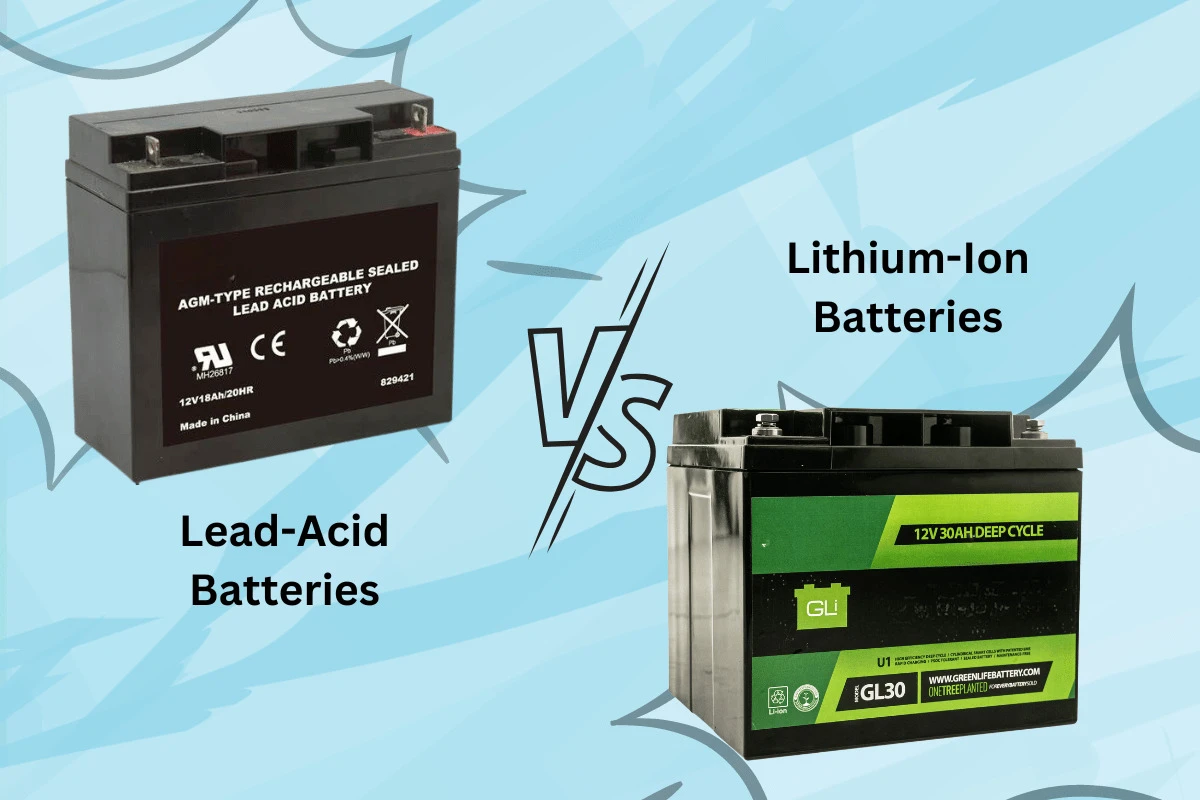Difference between Lithium Ion and Lead Acid Battery
A battery is an essential component of any portable electronic device, supplying the electrical energy needed to power the device. It works by performing chemical reactions that generate electrical energy.
Batteries are generally classified into two main types: rechargeable and non-rechargeable. In this article, we will focus on two widely used rechargeable battery types—Lithium-Ion batteries and Lead-Acid batteries—and highlight their key differences.
The core difference between them lies in the electrolyte used: lithium-ion batteries use lithium salt in an organic solvent, while lead-acid batteries use a combination of sodium metasilicate and sulfuric acid solution.
What is a Lithium Ion Battery?
A Lithium-Ion (Li-Ion) battery is a rechargeable battery where lithium ions are the main charge carriers. It has two electrodes—anode (graphite) and cathode (lithium metal oxide)—and an electrolyte that allows lithium ions to flow while preventing direct contact between the electrodes.
What is a Lead Acid Battery?
Lead-Acid battery, invented by Gaston Plante in the year of 1859, is a rechargeable battery with lead dioxide as the positive electrode and lead as the negative. It uses sulfuric acid as the electrolyte to enable electrochemical reactions that generate electrical energy.
The important differences between lead acid battery and lithium-ion battery are highlighted:
✅ Basic: Lithium-ion battery uses lithium as the main material, while lead-acid battery uses lead.
✅ Construction: Lithium-ion has a metal oxide and graphite structure, lead-acid uses lead dioxide and pure lead.
✅ Electrolyte: Lithium-ion uses lithium salt in organic solvent, lead-acid uses sulfuric acid.
✅ Energy Density: Lithium-ion stores more energy in less space, lead-acid stores less energy.
✅ Voltage per Cell: Lithium-ion provides 3.7 volts per cell, lead-acid provides around 2.25–2.27 volts per cell.
✅ Cost: Lithium-ion is more expensive, lead-acid is more affordable.
✅ Weight: Lithium-ion is lightweight, lead-acid is heavier.
✅ Size: Lithium-ion is smaller in size, lead-acid is larger.
✅ Efficiency: Lithium-ion is more efficient, lead-acid is less efficient.
✅ Controller: Lithium-ion needs a controller for charging, lead-acid works without one.
✅ Lifespan: Lithium-ion lasts longer, lead-acid has a shorter life.
✅ Maintenance: Lithium-ion needs less maintenance, lead-acid needs regular care.
✅ Safety: Lithium-ion has lower fire risk, lead-acid can be riskier if not handled well.
✅ Environment: Lithium-ion is less harmful to the environment, lead-acid has a higher impact.
✅ Ventilation: Lithium-ion does not need ventilation, lead-acid does.
✅ Usage: Lithium-ion is used in phones, laptops, EVs, and solar; lead-acid is used in cars, inverters, and backup systems.
Conclusion
Both lithium-ion and lead acid batteries are types of rechargeable batteries. The most significant difference between Lithium-Ion battery and lead acid battery is that a li-ion battery uses lithium as its key active material, while a lead acid battery uses lead and sulphuric acid as its main active materials. Another significant difference is a lead battery has higher energy density than a lead acid battery, allowing it to store more energy per unit volume or weight.

